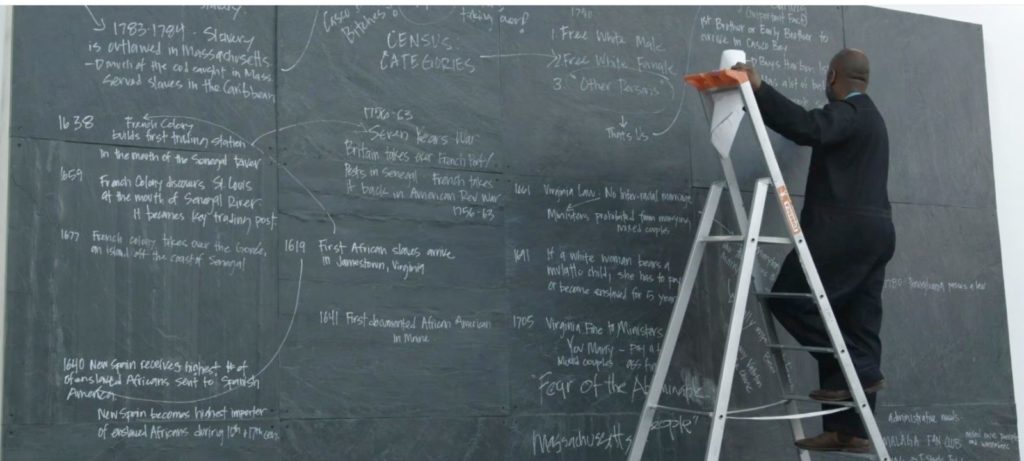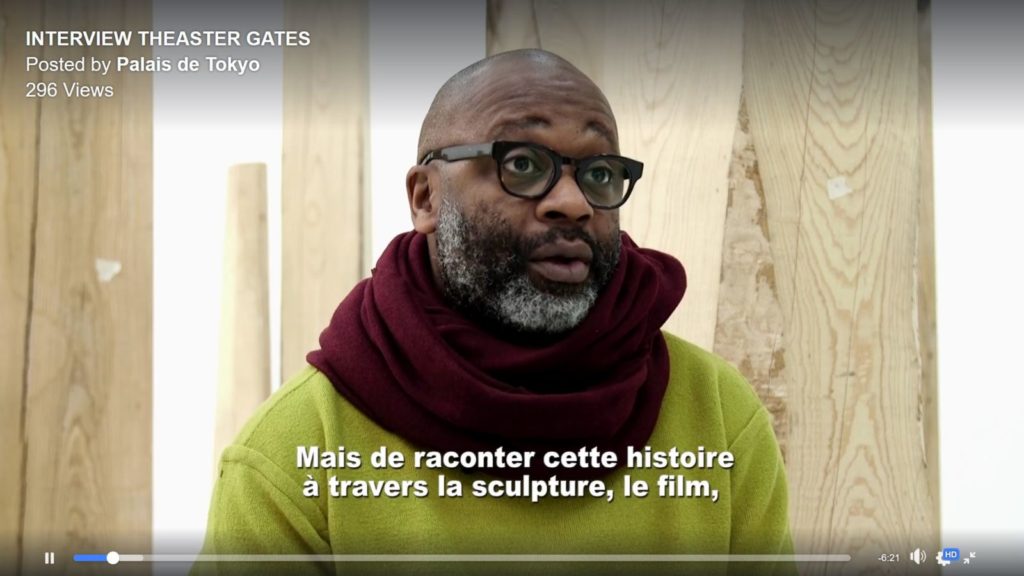 https://gagosian.com/quarterly/2019/03/08/theaster-gates-slate-wall-drawing-video/
https://gagosian.com/quarterly/2019/03/08/theaster-gates-slate-wall-drawing-video/
Theaster Gates, currently Distinguished Visiting Artist and Director of Artist Initiatives at the Lunder Institute for American Art, Waterville, Maine, has mounted his first solo exhibition in France at the Palais de Toyko entitled “Amalgam.” The term amalgam has been used in the past to denote racial, ethnic, and religious mingling. For Gates, it has acquired an even more charged significance, impelling his practice towards new formal and conceptual explorations in film, sculpture, architecture, and music. https://www.facebook.com/palaisdetokyo/videos/interview-theaster-gates/875998499398092/
https://www.facebook.com/palaisdetokyo/videos/interview-theaster-gates/875998499398092/
On view through the end of 2019, the exhibition explores social histories of migration and interracial relations using a specific episode in American history “to address larger questions of black subjugation and the imperial sexual domination and racial mixing that resulted from it.”
The starting point is the story of Malaga Island in Maine. Gates notes: “In 1912, the state governor expelled from Malaga the poorest population, an interracial, mixed community of about 45 people, considered ‘indolent’ by many of the local white inhabitants. These unfortunate people were forced to relocate throughout the mainland; some were even involuntarily committed to psychiatric institutions.” See more: https://www.pressherald.com/2012/05/20/a-century-of-shame_2012-05-20/
https://www.youtube.com/watch?v=nKvVvg0TeF8&w=560&h=315
#TheasterGates
“Nothing is pure in the end…
A sea of wood,
An island of debate.
Can an exhibition start shift the negative truths of the history of a place?.”
“Theaster Gates (born in 1973, lives in Chicago) works as an artist and land theorist. His practice includes sculpture, installation, performance and urban interventions that demonstrate the tremendous use value in economically destabilized communities. His projects attempt to instigate the creation of cultural capital by acting as catalysts for social engagement that leads to political and spatial change. Theaster Gates has described his method as “critique through collaboration” – often working with architects, researchers and performers to create works that expand ideas of what visual-based practices can be.”
See also Theaster Gates Art Library:
